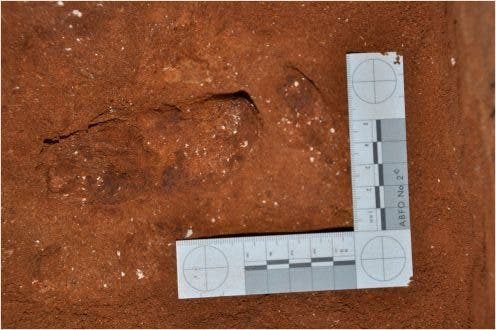Sometimes, archeology is about finding a whole T. rex and being showered with fame and glory. Other times, it’s about analyzing fossilized bird dung. Today’s story involves the latter.

Researchers at the Manaaki Whenua—Landcare Research Institute have recently discovered a deposit of moa coprolites (fossilized feces) in the Fiordland National Park, New Zealand. DNA sequencing and microscope analysis performed on the fossil, as well as our previous knowledge of where individual moa species lived, are helping us better understand what the little bush moa (Anomalopteryx didiformis) ate.
Taken at feces value
Virtually everything we know of the moa’s diets comes from coprolites and fossilized gizzard contents. These are usually run through DNA sequencing (to identify exactly which species they originate from), then dissected and examined under a microscope so scientists can get an idea of what the birds ate.
So far, most of what we know of the moa is concentrated around only three species from the South Island — the South Island giant moa, upland moa, and heavy-footed moa. Around 90% of all the material of this type we’ve found so far is related to one of these three species. The remaining six moa species, in contrast, are quite poorly understood. The new coprolite will help fill in missing parts of this picture — it belongs to one of the six latter species, the little bush moa.
This bird used to live in lowland, closed-canopy forests throughout New Zealand, growing to between 50 and 90 cm (1.64 to 2.95 ft) tall, and weighing around 26 to 64 kg (57 to 141 lbs). It’s a particularly important discovery, explains lead researcher Dr. Jamie Wood, because it comes from the southernmost site at which moa coprolites were ever discovered. The site is also the one with the longest documented timespan of coprolite accumulation, totalling around 2200 years.
“Until now, only five little bush moa coprolites have previously been identified, all from central Otago,” he adds.
“Pollen and plant DNA from the coprolites, as well as associated plant macrofossils, show that the deposit spans a period when the forest canopy was transitioning from conifers (dominated by miro, matai, totara, and mountain toatoa from the Podocarpaceae family) to silver beech (Lophozonia menziesii) dominance about 6800 to 4600 years ago.”
Evidence of red mistletoe (Peraxilla tetrapetala) was also found in the newly-discovered coprolites.
One interesting tidbit, however, is that very few seeds were found in this specimen compared to coprolites from other moa species. These birds often served to disperse tiny seeds around their habitats in their droppings, which is a very important ecological function. Regardless, the little bush moa seems instead to have been eating large conifer seeds, which get completely ground down in their gizzards, and not dispersed.
These findings seem to indicate that the little bush moa dined primarily on trees and shrubs in the forest understory, and offer reliable evidence that ground ferns made up an important part of their diet.
“While little bush moa may not have been great seed dispersers, based on our finding of ground fern DNA, frond cuticle remains and high spore counts, they may have played a previously unrecognized role as dispersers of ground fern spores throughout New Zealand forests,” according to Dr. Wood.
The paper “Mid-Holocene coprolites from southern New Zealand provide new insights into the diet and ecology of the extinct little bush moa (Anomalopteryx didiformis)” has been published in the journal Quaternary Science Reviews.
Was this helpful?



